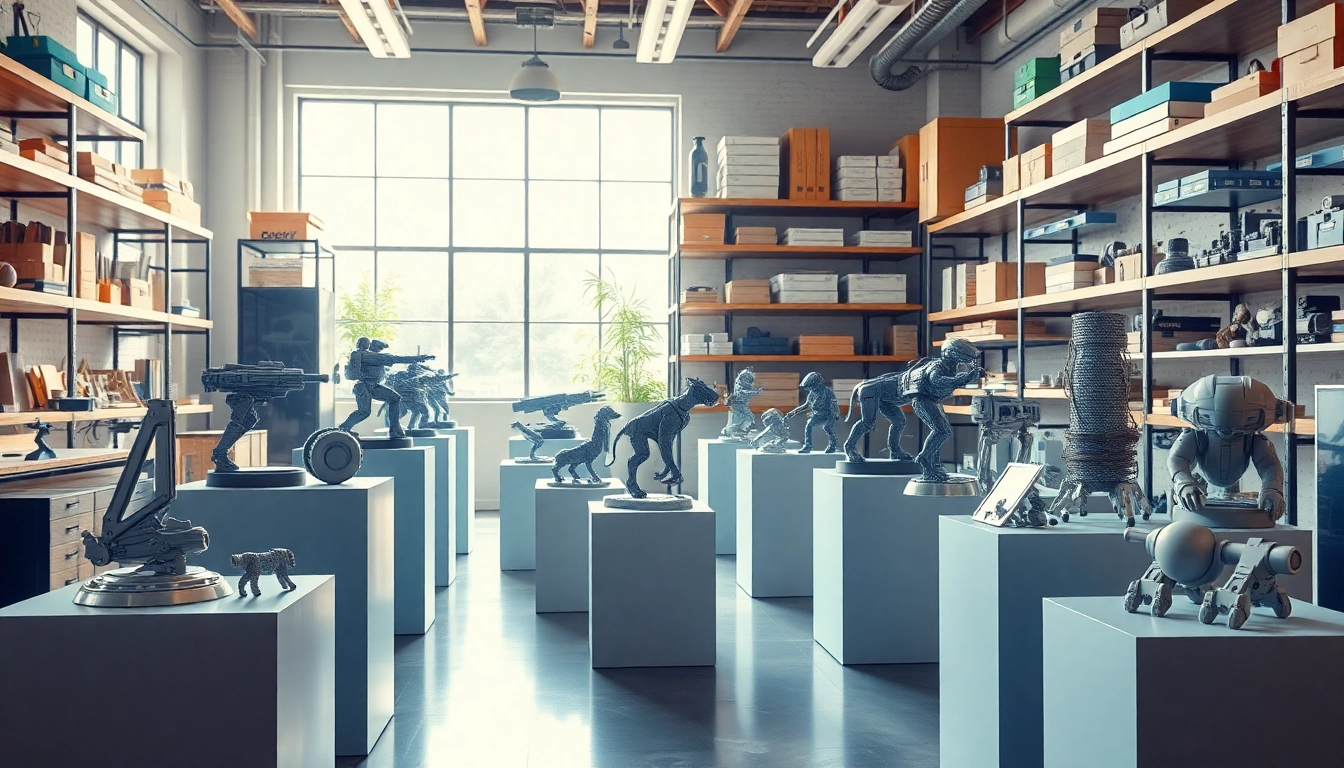Understanding 3D Modeling Services
In a world driven by technological innovation and visual storytelling, 3D modeling services have emerged as a cornerstone for various industries. These services facilitate the creation of digital representations of physical objects, making concepts more tangible through detailed and realistic 3D visuals. From initial product prototypes to complex architectural designs, the scope and application of 3D modeling have expanded significantly, showcasing its importance across diverse sectors.
What are 3D Modeling Services?
3D modeling services encompass processes and techniques utilized to create a three-dimensional representation of an object or scene using specialized software. This digital representation allows for an accurate portrayal of dimensions, textures, and colors, enabling clients to visualize their ideas more thoroughly. The outcomes of 3D modeling can vary widely, from intricate designs for the gaming industry to technical illustrations in industrial applications.
The Importance of 3D Models in Various Industries
The significance of 3D models is evident in multiple fields, including:
- Manufacturing: 3D modeling is pivotal in creating digital prototypes that save time and resources. It allows manufacturers to test and refine designs before production.
- Architecture: Architects utilize 3D models to visualize buildings and spaces, making it easier to communicate design concepts to clients and stakeholders.
- Entertainment: In film and video games, 3D models are essential for character design, environments, and animations, bringing stories to life in immersive ways.
- Healthcare: The healthcare sector employs 3D modeling for creating educational tools, surgical simulations, and even custom prosthetics tailored to individual patients.
Key Applications of 3D Modeling Services
3D modeling services find usage in various applications, such as:
- Visualization: Assisting businesses in showing potential products to consumers before they hit the market.
- Simulation: Allowing for the testing of products in a virtual environment to ensure they meet required specifications.
- Animation: Facilitating the creation of dynamic visuals for films, advertisements, and educational content.
- Gaming: Enabling the design of complex game assets that engage users through interactivity and immersive experiences.
Types of 3D Modeling Services Available
Product Visualization and Prototyping
Product visualization is a critical component in marketing and product development. By creating realistic 3D models, businesses can showcase new products without the need to manufacture physical prototypes. This can significantly cut costs and lead time. Furthermore, these models help in refining the design based on feedback before actual production begins.
Prototyping can also blend 3D printing technologies with modeling services. After a 3D model is completed, it can be directly transformed into a physical prototype using additive manufacturing techniques. Such integration enhances the speed of the design cycle and facilitates effective testing.
Character and Environment Modeling
In the entertainment industry, both character and environment modeling are fundamental. Character modeling involves creating detailed representations of characters used in films, games, and animations. This process includes defining the character’s anatomy, clothing, and facial features, ensuring they resonate emotionally with the audience.
Environment modeling complements character design by crafting the spaces in which they exist. These models can range from vast landscapes to intricate indoor settings, providing a context that enhances storytelling. The creation of believable environments is essential for immersing audiences into the narrative.
3D Animation and Motion Graphics
3D animation combines 3D modeling with movement, enhancing the visualization of products or concepts. This technique is extensively used in marketing, allowing companies to create engaging ads showcasing their products in action. Motion graphics extend this concept to animated text and graphic elements, blending seamlessly with video content.
Moreover, 3D animation is not limited to traditional media; it plays a pivotal role in virtual and augmented reality (VR/AR) applications, offering users a completely immersive experience. As these technologies advance, the demand for sophisticated 3D content is set to soar.
Choosing the Right 3D Modeling Service Provider
Identifying Your Project Needs
When considering a 3D modeling service provider, the first step is to define your project requirements. Understanding the specifics of what you need—be it product visualization, animated characters, or architectural designs—will guide your selection process. Additionally, consider factors such as the intended use of the models: Do you need them for presentations, marketing materials, or online platforms?
Evaluating Portfolios and Testimonials
A potential service provider’s portfolio is a window into their capabilities and creative approach. Reviewing previous projects can help assess whether their style aligns with your vision. Moreover, client testimonials can provide insights into their reliability and responsiveness throughout the design process. Look for providers that demonstrate versatility across different types of modeling services.
Understanding Pricing and Deliverables
Pricing for 3D modeling services can vary widely based on complexity, detail, and scope of the project. It’s crucial to obtain a clear understanding of the cost structure, including any additional fees for revisions or different file formats. Discuss deliverables upfront, ensuring that you receive everything needed for successful implementation, such as high-resolution files and source files.
Best Practices for Working with 3D Modelers
Effective Communication of Ideas
Clear communication is the bedrock of successful collaboration with 3D modelers. Utilize visual aids, sketches, and references to articulate your ideas effectively. Sharing examples of styles you admire can clarify your vision and streamline the creative process. Regular check-ins throughout the project duration can help ensure that the development aligns with your expectations.
Feedback and Iteration in the Design Process
Feedback is an integral component of the design process. Approach it constructively, providing specific comments that focus on desired adjustments rather than vague suggestions. This helps modelers understand your perspective and implement the necessary changes promptly. Encourage iteration; the best designs often emerge through collaborative refinement.
Setting Realistic Timelines and Budgets
Establishing a clear timeline and budget at the outset aids in project management. Discuss your timeline’s feasibility with the modeler to ensure they can meet your deadlines. Additionally, outlining a budget helps both parties understand expectations surrounding costs leading to a smoother workflow without unexpected financial hurdles.
Future Trends in 3D Modeling Services
Impact of Virtual Reality and Augmented Reality
The advent of virtual reality (VR) and augmented reality (AR) is reshaping how businesses utilize 3D modeling. As these technologies proliferate, immersive experiences powered by 3D content become increasingly common, enhancing user interaction. Businesses that adopt VR and AR technologies reap the benefits of deeper engagement and innovative marketing strategies.
Emerging Technologies in 3D Modeling
Advancements in software and hardware technologies are influencing the evolution of 3D modeling services. Tools that integrate artificial intelligence (AI) and machine learning enhance modeling accuracy and speed, enabling modelers to focus on creativity rather than repetitive tasks. The rise of cloud computing also facilitates collaborative working environments, allowing modelers and clients to work together in real-time, regardless of physical location.
Predictions for Industry Evolution
The future of 3D modeling services appears bright, with an increasing demand for high-quality models across all sectors. As businesses recognize the competitive edge gained through superior visuals and better storytelling, investments in 3D modeling will likely increase. This expansion will necessitate continuous adaptation and upskilling within the industry, fostering innovation and creativity.



